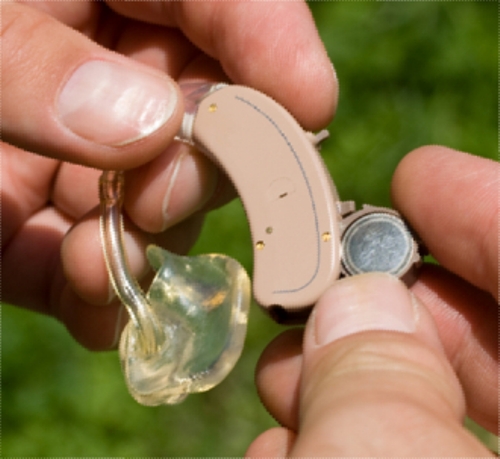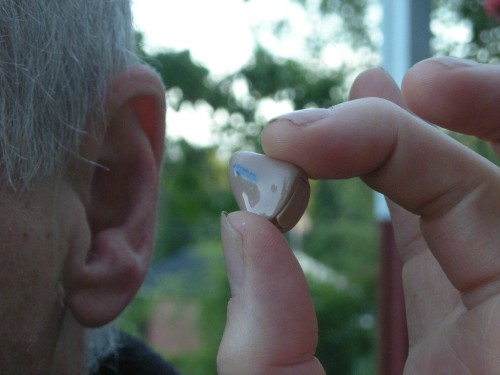
While technology has made tremendous progress in helping overcome disabilities related to the eye, skin and tongue, when it comes to the ear, some problems have always arisen. The best solution for a hearing problem is currently the hearing aid. However, there are many associated problems with the microphone, processor, speaker, volume and feedback from the device along with its prohibitive costs and interference problems. Here, we look at some common problems with hearing aids and attempt to minimize their impact.
Volume problem
Hearing aids are built in such a manner that they amplify sounds to a certain level which can be perceived by the inner ear. Now, usually, we hear sounds in different volumes based on their loudness. With the hearing aid on, there is a constant level of sound in the ear. Thus, even the slightest of sounds become loud unless the volume is manually turned down. This can get irritating and frustrating too. Turning down the volume will result in all other sounds getting reduced as well. So, there is now difficulty in catching conversations or the sounds going on during a television show. This again gets harrowing for the user. The irritation almost gets on to one’s nerves and can lead to physical symptoms like headaches. This is a long-term problem that the patient will have to learn to live with. The better option would be to use the hearing aid only when necessary.
Comfort problem
Hearing aids have a standard hissing or a whistling sound that keeps going on throughout. The only way to keep it out is to shut the hearing aid. Added to this, hearing aids are not always comfortable to wear. While in most cases the discomfort goes away after the first few weeks, in some cases, it remains for long after that. You have to meet your doctor whenever you face any such difficulties. Also, you cannot wear these hearing aids all the while. Wearing them while sleeping may give you an ear ache. In fact, there may be aches and pain in the external ears even after years of wearing them. This is due to the fact that they have some weight which the ears may find hard to carry.
Financial problem
Hearing aids have the potential to burn a very serious hole in your pocket! A hearing aid can get as costly as $ 5,000. Even the cheapest one costs $ 500. That is some serious cost. Well, the problem with going along with the cheaper ones is that they do not function well. The quality of materials used in their construction are naturally cheaper and thus, they cause greater discomfort. A decently good hearing aid will cost about $ 3,000. This is a problem that cannot be solved because hearing aids have to be manufactured with precision and are custom made. These two factors ensure that their production will never enjoy economics of scale and complete automation. Thus, even in the near future, the cost of hearing aids will be high. Again, hearing aids are only partially covered by some insurances alone. This means that the financial assistance of an insurance cover is also almost absent.
Interference problems with other devices
People who have a hearing aid invariably experience problems and sounds while using other devices, especially audio ones. Radio frequency emissions from cell phones create an irritating buzz or hiss in the hearing aid. This makes it difficult to understand the speech and communication over mobile phones becomes a real pain. There are hearing aid-compatible phones. But these also surely cost more than normal ones. This is not only with cellphones, the problems can arise even when one is making use of a microphone or megaphone to communicate with large audiences. The whinny of the hearing aid often gets amplified by the mic as well. Thus, adjustments in lifestyles are warranted when one begins to use hearing aids.
Battery related issues
The batteries that sit inside the hearing aid have to be tiny and lightweight so as to not make it troublesome for the wearer. This brings in the potential disadvantage of a low battery life and constant recharging. The batteries are made to conserve energy but since the hearing aid has to be up and functioning always, the batteries, on many occasions, sacrifice strength to fit in a tight spot. This strength reduction also results in a corresponding reduction in longevity. Higher end models have space saving zinc-air power cells. They make use of air to activate the zinc anode. However, this does not solve the problem completely because once the protective tab is removed, they start to make power without stoppage. Thus, battery drains even when not in use.
Microphone issues
While building the microphone that sits inside the hearing aid, cost is a very important factor. Most of the microphones that are embedded pick up sounds from all directions. This results in a cacophony of sounds from which the listener must intelligently pick out the audio signals that he/she would like to receive. To solve this problem, many companies have opted to make use of the uni-directional microphone. However, this proves to be quite expensive. It also means that the user will have to orient himself/herself everytime to hear the necessary audio input. The directional microphone also adds bulk to the ear piece. This means that the hearing aid becomes heavier and bulkier to carry about.
Feedback problem
The microphone of a hearing aid feeds the signal into a processor which will selectively amplify sections of the audio spectrum based on the kind of hearing loss that the person is suffering from. In spite of technological perfection, some signals inevitably recirculate between the speaker and mic. This creates an irritating and high-pitched feedback loop that becomes hard to break. It could get as irritating as a mosquito stuck inside the ear canal! Though the hearing aids’ external designing has improved vastly, the internal software and algorithms have remained at more or less the same effectiveness and efficiency. The very high end models have features of feedback cancellation and noise reduction but then costs become prohibitive.




